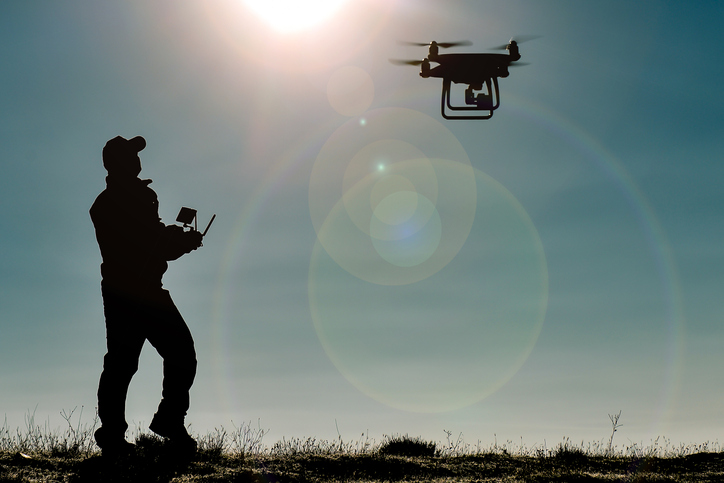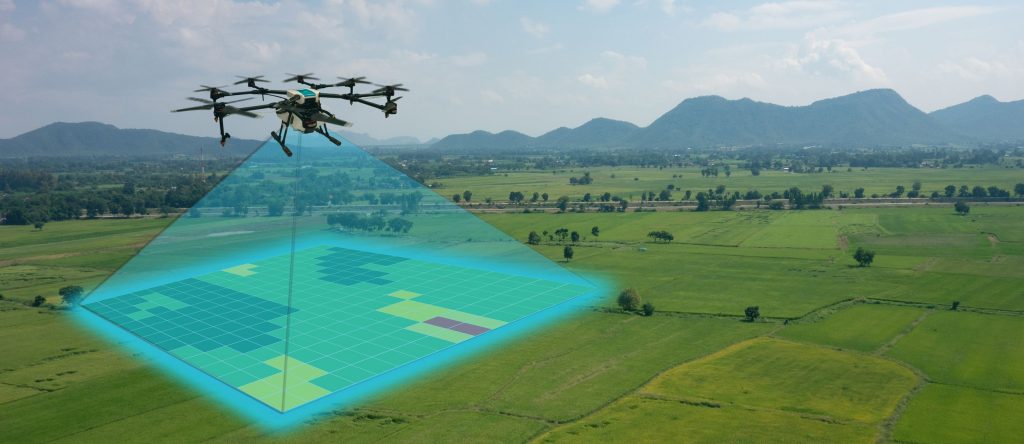Challenge:
Farmers all over America are experiencing a worker shortage amidst the global pandemic, and as labor costs rise per worker, the need to have an automated solution to visual crop monitoring has never been greater. In a small family business, it can be very expensive and tedious to walk or drive every acre to look out for pests and crop disease. Cloud Brigade can employ Machine Learning technology to minimize your costs while maintaining a constant watch over your crops in real time.
Benefits:
- Reduces labor costs and controls crop health more efficiently
- Eliminates the need for constant human attention to every acre of your farm
- Reduction in payroll budget yields increased investment in equipment and security
- Infinitely scalable — as your property size increases, your monitoring costs decrease
- Enhanced reliability and accuracy
About/Background
Ever wonder how you can monitor the health of every crop in your field without having to pay a larger and larger workforce? What if you knew that for about the cost of one worker for one growing season, you could have a system that will last for years and replace the need for several temporary workers each year? With the growing costs of labor and the growing competition in the marketplace, it’s becoming increasingly important to automate as much of your production as possible. It can be easy to use harvesting or sorting machines, or trained teams of experienced workers to do large-scale targeted jobs, but what about the mundane and time-consuming task of simply monitoring your crops for disease, insects, and pests or wildlife?

How much of your crop do you already lose every year to preventable incursions that you just don’t have the manpower to prevent? Is there a dollar amount of lost revenue that you already know? With AI in the Sky, you can monitor your crops efficiently using computer vision technology that can view each individual plant, check it for signs of disease or insects or birds, and classify each as healthy, damaged, or lost so that you can be alerted to specific areas of concern and have more time and warning to respond to each situation. With AI In the Sky, there’s no need for a human to do the constant monitoring. AI in the sky does it all for you at a very low cost.
Business Challenges
- Irresolvable Complexity – The possibility of a fungal, viral, or bacterial outbreak in one or many parts of your farm are very real, but with the vast size of your property, it can be time consuming and expensive to monitor every plant
- Improving Systems and Processes – The ability to monitor your fields via text message or email allows your teams to focus on other priorities, saving you time, money and decreasing or eliminating the need for new staff if you want to increase the size of your operation
- Skills & Staffing Gaps – Training a machine learning model to spot inconsistencies, classify them and send a text message or email to the right person is far cheaper and takes exponentially less time than hiring and training new temporary workers every year
- Antiquated Technology – How much money do you spend on gas and diesel and truck or tractor maintenance every year just to monitor your crops? And yet you still know exactly how much money you lose on diseased crops that could have been prevented, or on chemicals and pesticides that may not even be needed
Solution and Strategy
Cloud Brigade had already started looking at ways to use Computer Vision Models and other Machine Learning models in tandem when it built its front-lawn defender, the Poopinator. Cloud Brigade had proven it could think outside the box on complex projects and brought its “A team” to lead the development and design of an end-to-end IoT product that runs multiple Artificial Intelligence models to locate crop disease, pests, wildlife or other dangers in real time, alleviating labor costs and personnel issues while increasing your overall yields and saving you time and money.
Where it Began
Chris Miller, founder and CEO of Cloud Brigade, has been a Machine Learning guru for several years now. Machine Learning is the process of building mathematical and software models that help a computer “learn” how to complete a task, and Computer Vision applies Machine Learning techniques to camera images or video clips. In the summer of 2020, Chris was chatting with a friend of his in the Ag business, and they asked him if there might be a way to look at drone footage to monitor crop health and progress.
This Is No Ordinary Project
This spark of interest got hotter while learning about some new tools that the people at Amazon were rolling out. One of their products was a computer vision tool, and one of its use-case examples was this exact problem–how to monitor crops using AI. When he saw that not only were other people thinking about this same labor optimization problem, but that there was already a trained computer vision model ready to go for this exact use-case, he knew that now was the right time to learn how to bring this solution to his neighbors in Ag.
Smarty-Pants Technology
Amazon Rekognition and Custom Labels essentially uses a still image or a video camera’s output to feed already-optimized algorithms that use a process similar to gridsearch to find the most accurate interpretation of a given subject area. In this case, that area is a farm or an orchard. Rekognition Custom Labels can be deployed on an IoT (internet of things) device with a Machine Learning edge when connected to Amazon’s DeepLens camera, or can be fed images from a high-resolution camera mounted on a specially deployed drone.

What does this mean? This means that if we can program a drone to fly at a set altitude along your crops and take a wide view of each part of the farm, then without a human watching any footage, the camera can catalogue the number of irregularities in the crops, discern how many of those are vegetative (fungal, viral, or bacteria), how many are avian, insect or mammalian, and notify you or your management team of exactly where this irregularity is occurring. Thus, it can not only “see” what is happening, it can also alert you to the problem in real time, and if we get really fancy, it can even use a search engine to suggest immediate solutions or fixes in case you’re looking at a new issue. Pretty cool, huh?
Building the Classification Model
We train a Computer Vision Model to do its job by showing it lots of data points, or in this case, lots and lots of photos of good crops and bad crops. This is actually the most time-consuming part of the project from a human perspective, as we must collect thousands of images and identify them each in order to train our various models to recognize each plant problem. However, after less than a week, our model can discern between many different kinds of problems on par or better than a human, without the need for a coffee break or a vacation throughout the year. And, Amazon’s Rekognition has an algorithm that is almost ready-to-go.
Technical Hurdles to Overcome
The technical hurdles in this project include creating an efficient data pipeline that takes in the video stream from the fields, breaks each video frame down to where our model can run inference on it, and sends the resulting labels through an algorithm that decides if you need to be alerted of any problems. However, once our Data Engineers design the data pipeline, our Data Scientists train the model, and our Dev-Ops Engineers design the alert systems, your AI in the sky and IoT edge devices can be easily customized and distributed to your properties.
A Successful Integration and a Technology Handoff
One thing we have learned through our work in Machine Learning is just how time consuming and intricate each step can be. A lot of times, the work of building up the infrastructure and lining up the data so that the different parts can all communicate with each other are actually more challenging than creating and using Artificial Intelligence. This product is no different. The field device must be programmed to fly a specific pattern every day and to land again at its charging station, the data pipeline must be programmed with the proper error handling and notification systems, and the data reports must be connected to the alert systems with bullet-proof security. However once the data science has been fully integrated with the aircraft, very little regular maintenance is required to keep the system working.
The final step will be to automate the drone’s flight and flight pattern, and then to package the Machine Learning models with a drone carrying a high-resolution imaging and data transmission capabilities to the AWS Cloud Computing instance and the IoT alert products as a single end-to-end AI device.
Opportunities
While this project is designed to reduce costs to farmers and ag businesses, it is not a niche product. From identifying market opportunities for solar panel companies to spotting possible wildfire fuel buildups, it can be scaled out and adapted easily. We look forward to the final product being useful in companies and public service organizations of every size all across the country. This is the perfect system for a small business that needs to maximize its labor hours from protecting crops to generating sales leads, a large company that wants to monitor the progress on a construction project or utility line safety status, or a public agency that needs a status update after a wildfire, earthquake, or hurricane. We’re excited to take the next steps to help your business and can’t wait to show more photos and videos of the process.
WHAT’S NEXT
If you like what you read here, the Cloud Brigade team offers expert Machine Learning as well as Big Data services to help your organization with its insights. We look forward to hearing from you.
Please reach out to us using our Contact Form with any questions.
If you would like to follow our work, please sign up for our newsletter.